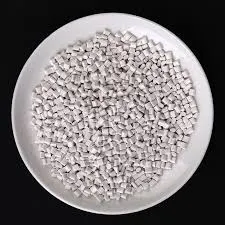Chemicals Used in Water Treatment
Water treatment is a crucial process that ensures the safety and quality of drinking water, as well as the effectiveness of wastewater treatment. With growing concerns over pollution and the necessity for clean water, the use of chemicals in water treatment has become indispensable. These chemicals serve various purposes including disinfection, coagulation, flocculation, and pH adjustment. This article explores various chemicals utilized in water treatment and their roles in maintaining water quality.
1. Coagulants
Coagulation is one of the first steps in water treatment, wherein chemicals are added to water to help remove suspended solids. Aluminum sulfate, commonly known as alum, is the most widely used coagulant. When alum is added to water, it reacts with alkalinity to form aluminum hydroxide, which precipitates and traps suspended particles, allowing them to settle. Other coagulants, such as ferric sulfate and polyaluminum chloride, are also used, often depending on the specific characteristics of the water needing treatment.
2. Flocculants
Following coagulation, flocculation aids in the removal of impurities by promoting the formation of larger aggregates of particles known as flocs. Flocculants are typically high-molecular-weight polymers added to the water to help bind together the smaller particles created during the coagulation process. By increasing the size of these aggregates, flocculants ensure they can be easily removed from the treated water through sedimentation or filtration.
Disinfection is a critical step in ensuring that drinking water is free from pathogens that could cause disease. Chlorine remains one of the most effective and widely used disinfectants due to its ability to kill bacteria, viruses, and some protozoa. However, chlorine can react with organic matter to form disinfection byproducts, some of which are harmful. As a response, alternative disinfectants, such as ozone and ultraviolet (UV) light, have gained popularity. Ozone is a powerful oxidant that is effective for disinfection and can also improve the taste and odor of treated water.
chemicals used in water treatment

4. pH Adjusters
The pH level of water is crucial for its quality and the effectiveness of various treatment processes. Chemicals such as sodium hydroxide or lime are commonly used to raise the pH of acidic waters, whereas sulfuric acid or citric acid may be employed to lower alkaline water's pH. Maintaining the appropriate pH is not only vital for optimizing the disinfection processes but also for ensuring that heavy metals and other contaminants remain in a form that can be effectively removed.
5. Corrosion Inhibitors
Corrosion in water distribution systems can lead to the leaching of heavy metals, such as lead and copper, into the drinking water supply. To combat this, corrosion inhibitors like orthophosphate are added to the water. These chemicals create a protective layer on the surfaces of pipes and plumbing fixtures, helping to mitigate corrosion and reduce metal leaching.
6. Flavors and Odor Control Agents
Commonly, water can have unpleasant flavors and odors due to natural organic matter and microbial growth. Activated carbon is an effective adsorbent used to remove these undesirable tastes and smells. Additionally, certain agents such as potassium permanganate can be applied to oxidize organic compounds contributing to malodors.
Conclusion
The effective use of chemicals in water treatment is indispensable for ensuring safe and potable water. Each class of chemicals serves specific functions, ranging from removing impurities to disinfecting the water. As water quality standards become more stringent and public health concerns grow, the development and optimization of chemical treatments are likely to continue to evolve. Public awareness and understanding of these processes can further contribute to the appreciation of water as a vital resource. The balance between effective treatment and environmental responsibility will continue to shape the future of water treatment technologies.

